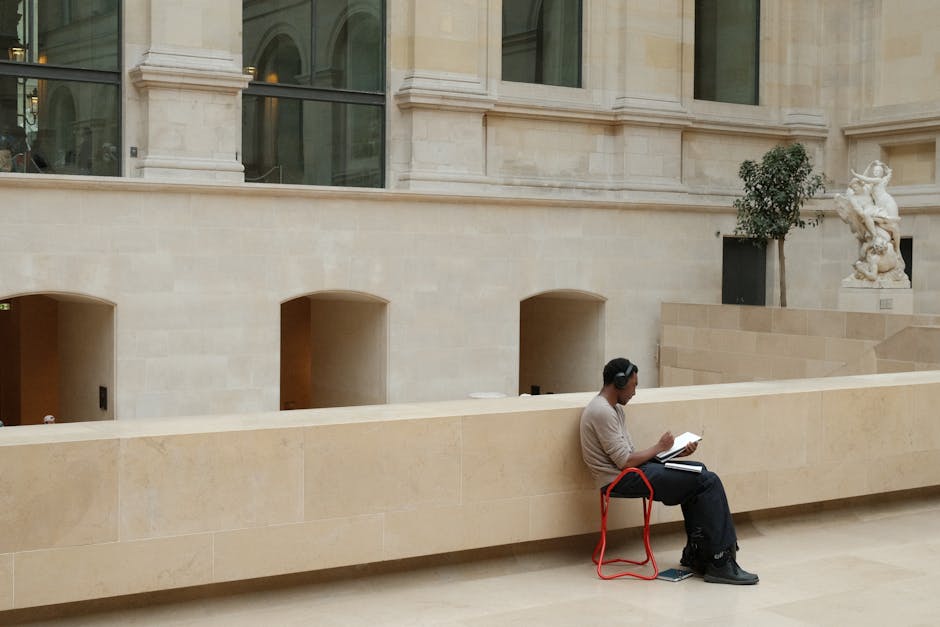⏱️ 4 min read
Top 10 Fun Facts About the Louvre Museum
The Louvre Museum in Paris stands as one of the world’s most prestigious and visited cultural institutions. While most people know it as the home of the Mona Lisa, this architectural marvel holds countless fascinating secrets and surprising facts. Here are ten intriguing aspects about the Louvre that showcase its rich history and cultural significance.
1. Royal Roots
Originally built as a fortress in the 12th century, the Louvre was first constructed under Philip II’s reign to protect Paris from Viking attacks. The building’s foundation can still be seen in the Louvre’s basement level today. It later served as a royal residence for French monarchs until Louis XIV moved the court to Versailles in 1682.
2. Massive Collection Size
The Louvre houses approximately 380,000 objects and displays 35,000 works of art at any given time. The museum’s collection is so vast that it would take about three months to see every piece of art if you spent just 30 seconds viewing each item and worked eight hours a day.
3. The Glass Pyramid’s Numbers
I.M. Pei’s controversial glass pyramid, completed in 1989, consists of exactly 673 glass panes. The structure stands 71 feet high and was constructed using 95 tons of steel and 105 tons of aluminum. Despite initial public outcry, the pyramid has become one of Paris’s most recognizable landmarks.
4. Hidden Apartment
Napoleon III’s apartments remain preserved within the Louvre, offering visitors a glimpse into the opulent lifestyle of French royalty. These luxurious rooms feature ornate decorations, gilded ceilings, and period furniture, yet many visitors pass by without realizing their existence.
5. Mona Lisa’s Room
The room housing the Mona Lisa, known as the Salle des États, is the only gallery in the museum with its own postal code. The painting is protected by bulletproof glass and is kept at a constant temperature of 43 degrees Fahrenheit. Over six million people view the painting annually.
6. World War II Connection
During World War II, the Nazis used the Louvre as a storehouse for stolen art. Before their arrival, museum staff had evacuated most of the collection to various safe locations throughout France. The evacuation took 36 hours and required over 200 trucks to transport the artifacts.
7. Ghost in the Tuileries
Legend speaks of a mysterious ghost called “Red Man” who haunts the Tuileries Garden. This spirit allegedly belonged to a butcher named Jean L’Écorcheur, who was murdered in the palace during Catherine de Medici’s reign. Several visitors and staff members have reported mysterious sightings over the centuries.
8. Underground Network
Beneath the Louvre lies an extensive network of tunnels and chambers, including parts of the medieval fortress and modern conservation facilities. These underground spaces house laboratories, storage areas, and a shopping center known as the Carrousel du Louvre.
9. First Public Museum
The Louvre became the world’s first public art museum in 1793 during the French Revolution. When it opened, it displayed 537 paintings, with the majority of the works being royal collections seized from the church and aristocracy. Initially, it was only open on weekends for public viewing.
10. Da Vinci’s Legacy
The Louvre holds the largest collection of Leonardo da Vinci’s paintings in the world, with five out of his surviving fifteen paintings. Besides the famous Mona Lisa, the museum houses “The Virgin of the Rocks,” “Saint John the Baptist,” “La Belle Ferronnière,” and “The Virgin and Child with Saint Anne.”
Conclusion
The Louvre Museum represents more than just an art gallery; it embodies centuries of history, culture, and human achievement. From its humble beginnings as a fortress to its current status as the world’s most visited museum, these ten facts merely scratch the surface of what makes the Louvre truly extraordinary. Whether examining its architectural evolution, exploring its vast collections, or discovering its hidden secrets, the Louvre continues to captivate millions of visitors each year with its endless array of treasures and stories.
These fascinating aspects of the Louvre demonstrate why it remains one of the world’s most important cultural institutions, combining art, history, architecture, and legend into an unparalleled museum experience that continues to educate and inspire visitors from around the globe.


